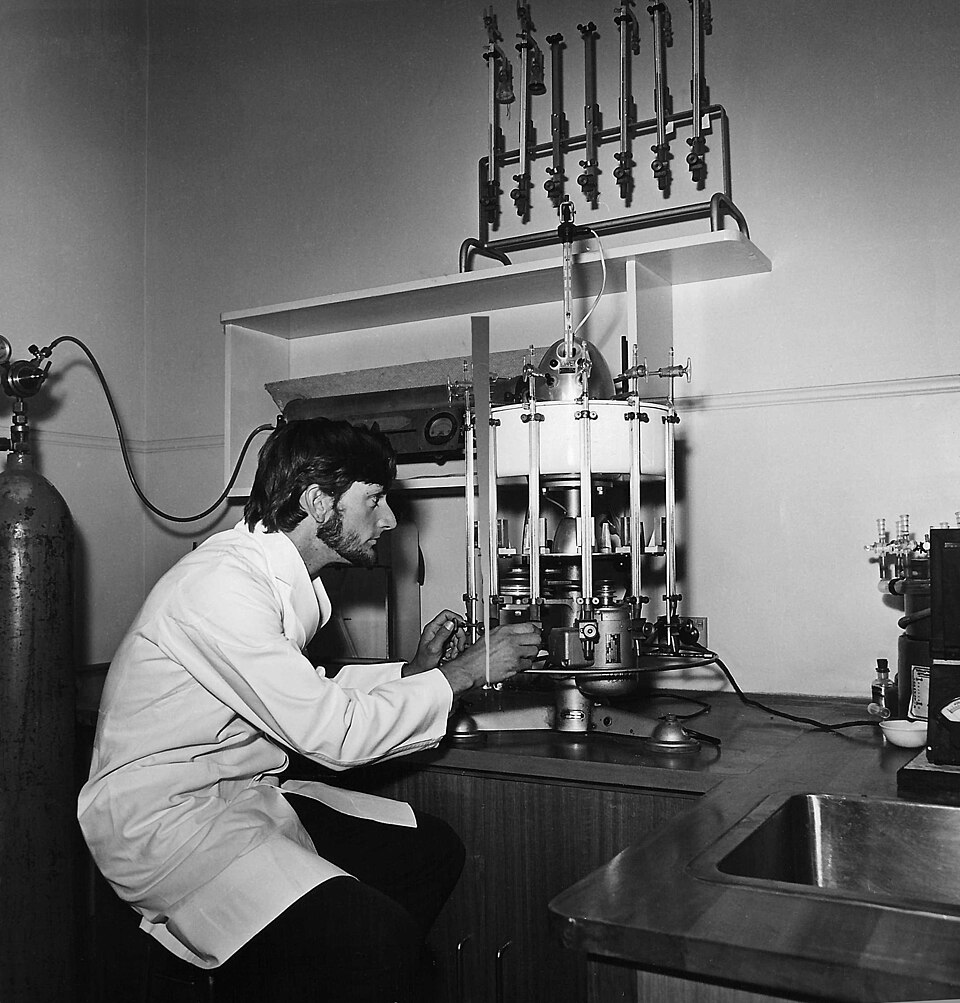OCR Specification focus:
‘Compare relative energy values of carbohydrates, lipids and proteins; calculate respiratory quotient, RQ = CO₂ produced / O₂ consumed; measure rates using respirometers.’
Respiration releases energy from different respiratory substrates, providing ATP essential for cellular processes. Understanding substrate energy values, respiratory quotients (RQ) and respirometer measurements helps interpret metabolic activity in living organisms.
Respiratory Substrates
Definition and Overview
Respiratory substrates are organic molecules broken down in respiration to release energy for ATP synthesis. They mainly include carbohydrates, lipids, and proteins, each yielding different amounts of energy per gram and consuming varying amounts of oxygen.
Cells usually oxidise glucose as the primary substrate, but alternative molecules are used when glucose is scarce or under different physiological conditions.
Energy Values of Respiratory Substrates
The energy released during respiration depends on the number of hydrogen atoms available for oxidation. The more hydrogens that can be transferred to oxygen to form water, the greater the energy yield.
Carbohydrates (e.g. glucose) are the main energy source.
They are relatively easy to respire.
They have moderate energy content as they contain roughly equal proportions of carbon, hydrogen, and oxygen.
Lipids contain a much higher proportion of hydrogen and fewer oxygen atoms.
They produce more ATP per gram than carbohydrates.
Complete oxidation releases approximately twice the energy of carbohydrates.
Lipids require more oxygen for oxidation due to their higher hydrogen content.
Proteins are normally used only when carbohydrates and lipids are unavailable.
They must first be deaminated (removal of amino groups).
The remaining carbon skeletons enter respiration as pyruvate, acetyl CoA, or Krebs cycle intermediates.
Their energy value is lower because the process is less efficient and some energy is lost during conversion.
Energy Yield Summary
Lipids: Highest energy yield (~39 kJ g⁻¹)
Carbohydrates: Intermediate energy yield (~17 kJ g⁻¹)
Proteins: Slightly lower yield (~17 kJ g⁻¹) but variable due to amino acid differences
These differences influence RQ values, as oxygen consumption and carbon dioxide production vary according to substrate type.
Respiratory Quotient (RQ)
Respiratory Quotient (RQ): The ratio of carbon dioxide produced to oxygen consumed during respiration.
The RQ provides insight into which substrate an organism is respiring and whether conditions are aerobic or anaerobic.
Equation and Variables
EQUATION
—-----------------------------------------------------------------
Respiratory Quotient (RQ) = CO₂ produced / O₂ consumed
CO₂ produced = Volume of carbon dioxide released (cm³ or mol)
O₂ consumed = Volume of oxygen taken in (cm³ or mol)
—-----------------------------------------------------------------
An RQ value close to 1.0 indicates carbohydrate respiration, whereas lower or higher values suggest lipid or protein use, or anaerobic conditions.
Typical RQ Values
Carbohydrates: RQ ≈ 1.0
e.g. Glucose oxidation:
C₆H₁₂O₆ + 6O₂ → 6CO₂ + 6H₂O
RQ = 6/6 = 1.0
Lipids: RQ ≈ 0.7
e.g. Fatty acid oxidation consumes more oxygen relative to carbon dioxide produced.
Proteins: RQ ≈ 0.9 (variable due to amino acid composition)
Anaerobic respiration: RQ > 1.0
Carbon dioxide is still produced, but oxygen uptake ceases, raising the ratio.
Significance of RQ Values
Identifies substrate use: RQ helps determine which molecules are being respired under certain conditions.
Indicates metabolic state:
RQ near 1.0 → balanced aerobic metabolism.
RQ < 1.0 → lipid or protein oxidation predominates.
RQ > 1.0 → anaerobic activity or incomplete oxidation.
Used in physiological studies: RQ measurements in plants or animals reveal metabolic shifts under stress, starvation, or intense exercise.
Measuring Respiration with a Respirometer
Respirometer: A device used to measure the rate of respiration by determining the rate of oxygen consumption or carbon dioxide production.
A respirometer quantifies gas exchange in living organisms, allowing the calculation of respiration rate and RQ values experimentally.

Laboratory photograph of a Warburg respirometer with flasks and a U-tube manometer used to track pressure changes as gases are consumed or produced. The instrument enables precise measurements of respiration rate by relating manometer displacement to O₂ uptake/CO₂ release. This example shows cellular-level respirometry rather than whole-organism seeds/invertebrates. Source.
Components of a Simple Respirometer
A typical respirometer setup includes:
Living material (e.g. germinating seeds or small animals) placed in a sealed chamber.
Soda lime or potassium hydroxide (KOH) to absorb carbon dioxide produced.
Manometer or capillary tube connected to the chamber to measure volume changes.
Water bath to maintain a constant temperature.
Control apparatus with a non-living equivalent to account for pressure changes.
How a Respirometer Works
Preparation: The organism is sealed in the chamber with an absorbent to remove CO₂.
Respiration occurs: Oxygen is consumed, reducing the gas volume inside the chamber.
Manometer movement: As gas volume decreases, a coloured fluid in the capillary moves towards the chamber.

Simplified U-tube manometer diagram showing fluid columns used to detect small pressure differences. In respirometry, movement of the manometer fluid corresponds to net gas volume changes in the sample chamber. This schematic omits organism-specific details to emphasise the pressure-measurement principle. Source.
Measurement: The distance moved in a fixed time indicates the oxygen uptake rate.
Control experiment: Ensures any movement due to temperature or pressure changes can be subtracted from results.
By measuring both O₂ uptake and CO₂ production, students can calculate RQ values and assess the respiratory substrate used.
Applications of Respirometers
Comparing metabolic rates: Between different organisms or conditions (e.g. light vs dark, ectothermic vs endothermic).
Investigating temperature effects: Higher temperatures increase respiration until enzymes denature.
Analysing aerobic vs anaerobic respiration: The absence of oxygen uptake indicates anaerobic processes.
Practical learning: Commonly used in OCR practical investigations to support theoretical understanding.
Considerations for Accurate Measurement
To ensure reliable data:
Maintain a constant temperature to prevent gas expansion.
Ensure airtight seals to avoid leaks.
Use appropriate controls for environmental variables.
Allow organisms to equilibrate before recording data.
Correct for atmospheric pressure changes using the control apparatus.
Interpreting Respirometer Data
High oxygen uptake rate: Indicates active metabolism, such as during germination or exercise.
Low oxygen uptake rate: Suggests dormancy or reduced metabolic demand.
CO₂ absorption: If CO₂ is absorbed, volume decrease corresponds directly to O₂ consumption.
No CO₂ absorber: Total gas volume change reflects the balance between CO₂ production and O₂ consumption, enabling RQ calculation.
FAQ
Lipids contain a higher proportion of hydrogen atoms and fewer oxygen atoms than carbohydrates. Each hydrogen atom releases energy when oxidised to form water during respiration.
Because lipids are more reduced molecules, they donate more electrons to the electron transport chain, allowing more ATP molecules to be synthesised per gram.
Additionally, the complete oxidation of fatty acids involves many rounds of beta-oxidation, yielding multiple acetyl CoA molecules that enter the Krebs cycle, further increasing energy yield.
When aerobic respiration is limited, oxygen uptake falls but carbon dioxide may still be produced through anaerobic pathways such as fermentation.
As a result, the numerator in the RQ equation (CO₂ produced) remains similar or increases slightly, while the denominator (O₂ consumed) decreases, giving an RQ greater than 1.
An RQ significantly above 1 therefore suggests that the organism has switched to anaerobic metabolism, such as during vigorous exercise in animals or oxygen deficiency in plants.
Proteins must first be broken down into amino acids and then deaminated, removing their amino groups before entering the respiratory pathway.
This process requires energy and produces waste products such as ammonia or urea that must be excreted, reducing the overall efficiency.
As a result, proteins are used mainly during starvation or carbohydrate deprivation, when energy demand outweighs substrate availability.
Temperature influences both enzyme activity in respiration and gas volume.
As temperature increases, enzyme-controlled respiration initially speeds up, increasing oxygen consumption.
Beyond the optimum temperature, enzymes denature, reducing respiration rate.
Independently, gases expand with temperature rise and contract when cooled, altering pressure and manometer readings.
To control these effects, respirometers are usually placed in a constant-temperature water bath, and a control apparatus without living material is used to correct for gas expansion or contraction.
Ethical and safety considerations are essential when working with animals or seeds.
Ensure organisms are not exposed to harmful chemicals (e.g. avoid direct contact with soda lime).
Maintain appropriate oxygen levels and temperature to prevent stress or death.
Handle seeds or invertebrates gently and return them safely after the experiment.
Use small sample sizes and ensure airtight but not overly pressurised chambers.
These measures protect both the validity of results and the welfare of the organisms used.
Practice Questions
Question 1 (2 marks)
Define the term respiratory quotient (RQ) and state the typical RQ value for carbohydrate respiration.
Mark Scheme:
1 mark for correct definition: RQ is the ratio of carbon dioxide produced to oxygen consumed during respiration.
1 mark for correct value: RQ = 1.0 for carbohydrates (accept “approximately 1”).
Question 2 (5 marks)
Describe how a respirometer can be used to measure the rate of respiration in germinating seeds. Include in your answer the function of the main components and how results are interpreted.
Mark Scheme:
1 mark for stating that the respirometer measures oxygen uptake (or gas exchange) during respiration.
1 mark for describing that the organism (germinating seeds) is placed in a sealed chamber.
1 mark for mentioning that carbon dioxide is absorbed by a chemical such as potassium hydroxide or soda lime.
1 mark for explaining that as oxygen is used, pressure decreases causing movement of the manometer or coloured fluid.
1 mark for explaining that the distance moved in a set time indicates the rate of respiration, which can be calculated as oxygen uptake per unit time (e.g. cm³ min⁻¹).

